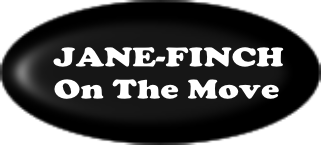







Introduction
It was a few years ago that I found myself walking along the east side of Jane Street, just north of the Driftwood Community Centre (4401 Jane Street). The mid morning sky was blue, the sun shined bright, and there was no one else in sight. The silence was a bit surprising, given that I was only minutes north of the Jane-
“Do you want an apple, sir?”
The young voice caught me by surprise. I whirled around, but as I said, there was no one else in sight. My reaction made the mystery voice chuckle, and that’s when my ears placed him. I hadn’t realized I walked by a tree; in fact, I had walked by a line of trees (what can I say? I’m not a particularly observant person). So I looked up.
There was a black child sitting up in the tree. With the passing of time, I don’t recall the exact details of the conversation beyond that initial greeting. I do remember that my mystery man was extremely well-
I certainly do remember that when we finished talking, I had a big smile on my face. Apple trees near Jane and Finch -
Now, be honest. Was that the kind of story you expected to read in the opening chapter of a book about the Jane-
Maybe you were expecting something like the following lead from a newspaper article written in 2008:
“Jane and Finch. What started as an urban planning dream quickly became a disaster and developed into a notorious neighbourhood where youth go to die or go prior to jail.”(1)
Let’s not sugar coat anything. The Jane-
While those three buildings are likely the largest in the area, they’re certainly not the only ones. In fact, there are fourteen high rises along the four kilometre stretch of Jane Street from Steeles Avenue West to Sheppard Avenue West. These are just the buildings with a Jane Street address, as the San Romanoway buildings weren’t included. There are even more if one goes down roads such as Driftwood Avenue, Grandravine Drive, and Tobermory Drive. In the area north of Finch between Black Creek and Highway 400, “62.1 percent of dwellings are in buildings with five or more floors.”(3)
Other issues come from the area’s demographics -
Take these issues and stir them together, and one might expect to find an area that is lawless and violent, an area that steadily cranks out lurid headlines, a notorious area “where youth go to die.” Recent murder rates (2011) tell a slightly different tale. In the top ten most lethal neighbourhoods of Toronto, the closest we get to a Jane-
This doesn’t change the fact that Jane-
The purpose of this book is to go beyond the statistics, the headlines, and the generalizations. There are over fifty thousand people living in this neighbourhood, but it seems the only time any of them get heard is when there’s a tragedy, or there’s a story that reveals signs of hope in Jane-
Most of the people interviewed for this book are members of Jane-
Because this book is meant to capture the thoughts of group members, the material was largely gathered through meetings with as few as two members up to eight at a time. Some of these sessions were free-
During the interview and initial transcribing process, members decided they wanted to maintain their anonymity. In some cases, the editor changed minor details to ensure members’ privacy would be protected. Otherwise, everything in this book comes directly from the mouths of residents, free to express their personal points of view. There was no attempt made to have everyone share a common viewpoint. Residents of Jane-
The material was sorted by topic and placed into the appropriate chapter. Some members and residents discussed personal aspects of their own lives in detail, and in those cases, they got a section titled “My Story.” The chapter headings and brief description of each are in the Table of Contents.
Feel free to skip from section to section, even from paragraphs on the page. The book has been set up as a series of comments and conversations so it’s more readily accessible. If you live in the Jane-
Angelo Furlan, Chair
Jane-
Notes
1 “Fear at the corner of guns 'n' drugs,” Toronto Sun, 23 March 23 2008
2 “Turning a rundown highrise into a community hub,” Toronto Daily Star
12 January 2011
3 Julie-
4 CBC News, “10 neighbourhoods for most per capita crime in 2011,” http://www.cbc.ca/news/canada/toronto/story/2012/10/23/toronto-
http://www.toronto.ca/demographics/profiles_map_and_index.htm
5 J. David Hulchanski discusses the substantial increase of low income areas within the City of Toronto in his report, “The Three Cities Within Toronto.” At the time of writing, a digital copy could be found here: http://www.urbancentre.utoronto.ca/pdfs/curp/tnrn/Three-
6 To learn more about Jane-

